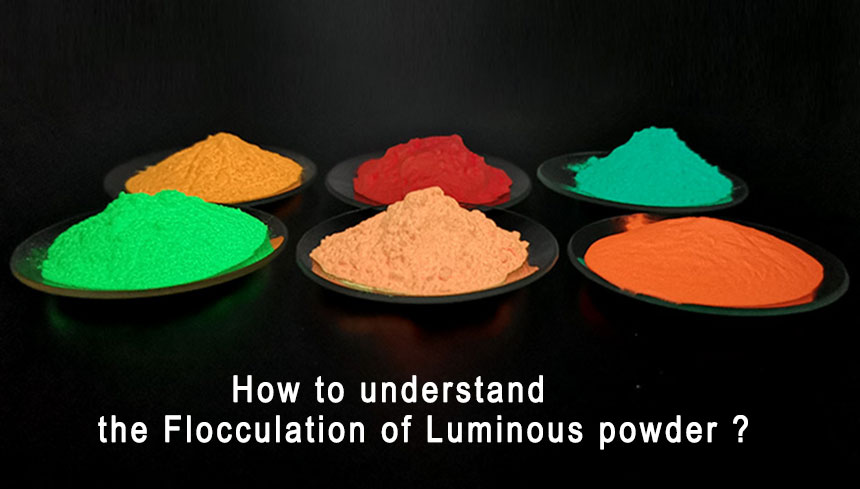gần đây bài viết
Bột phát sáng gốc nước là một loại vật liệu có khả năng hấp thụ và phát ra ánh sáng. Bột dạ quang còn có nhiều tên gọi khác nhau như bột phát sáng trong bóng tối, bột phát sáng trong bóng tối, bột dạ quang, bột phát quang hay bột stronti aluminat. Bột phát sáng iSuoChem thường được sử dụng trong các ứng dụng khác nhau như biển báo an toàn, quần áo, đồ chơi, mực, sơn, thuốc tiêm và các mặt hàng mới lạ. Tuy nhiên, vật liệu này có thể bị keo tụ, có thể ảnh hưởng đến hiệu suất và chất lượng của nó.
Trong bài viết này, chúng tôi sẽ thảo luận về nguyên nhân gây ra hiện tượng keo tụ bột phát sáng gốc nước và cách phát hiện cũng như phòng ngừa.
Nguyên nhân gây keo tụ bột phát sáng gốc nước
1. Yếu tố vật chất
Có nhiều nguyên nhân gây ra hiện tượng keo tụ bột phát sáng gốc nước , bao gồm các yếu tố vật lý và hóa học. Một trong những yếu tố vật lý là việc bảo quản nhũ tương lâu ngày có thể gây ra hiện tượng va chạm giữa các hạt latex do chuyển động Brown dẫn đến hiện tượng nhũ tươngsự đông lại. Ngoài ra, tác động của trọng lực có thể làm cho các hạt latex lắng xuống hoặc nổi lên để tạo thành chất đông tụ, dẫn đến các tập hợp không thể phục hồi có thể phá vỡ nhũ tương.
Một yếu tố vật lý khác có thể gây keo tụ là quá trình đóng băng và tan băng đồng thời, điều này có thể ảnh hưởng đến sự ổn định của nhũ tương. Những thay đổi vật lý này là không thể đảo ngược và không làm tăng độ pH của hệ thống.
2. Yếu tố hóa học
Mặt khác, một yếu tố hóa học có thể gây keo tụ là sự phá hủy lớp chống thấm của bột phát sáng bởi một chất nào đó trong hệ thống. Điều này có thể gây ra phản ứng hóa học của bột phát sáng, dẫn đến nhựa acrylic chuyển từ phân tử nhỏ sang phân tử lớn. Các phân tử lớn hơn kết dính với bột, khiến nó kết tủa và bọc các đại phân tử lại với nhau để tạo thành một chất rắn và khối. Phản ứng cũng tạo ra nhôm hydroxit, có thể làm tăng đáng kể giá trị pH của hệ thống.

Phát hiện và ngăn chặn keo tụ bột phát sáng gốc nước
To detect water-based glow powder flocculation, a simple inventory powder detection method can be used. This method involves taking a sample of the orange and yellow-green glow powder in stock, mixing each powder with lotion, and then testing them separately. After mixing 50% of the yellow-green and orange powders with the emulsion, a pH and viscosity test can be performed, and the sample can be sealed and put in 50-60 degree warm water or an oven for 12-13 days. After this period, the pH and viscosity changes can be observed using an electronic pH value tester.
1. If the viscosity rises but the pH does not change, there may be a problem with the emulsion system. In this case, the pH value of the emulsion can be adjusted to 6.5 to 7, and the test can be repeated.
2. If the pH value rises, the viscosity rises, and the glow powder is hydrolyzed, then this batch of goods cannot be used. In this case, each additive can be mixed with the glow powder separately, and the change in pH value can be observed to determine which additive reacts with the glow powder. The additive can then be adjusted accordingly.
To prevent water-based glow powder flocculation, proper storage and handling of the material are necessary. The material should be stored in a cool and dry place, away from direct sunlight, and should not be exposed to extreme temperatures or moisture. Additionally, the emulsion should be properly formulated and stabilized to prevent coagulation and settling of the latex particles.
In conclusion, water-based glow powder flocculation can be caused by physical and chemical factors, and it can affect the quality and performance of the material. Proper detection and prevention methods can help ensure the quality of the product and prevent wasted resources.
As an established supplier of Chinese glow powder since 2007, iSuoChem can provide glow pigment powder for plastics-resin-cement-concrete-color runs-epoxy-shoe-cars. We also can supply Skin safe glow in the dark powder for soap-slime-nails. Fair&lovely glow powder is everyone's love.
đội ngũ chuyên nghiệp để phục vụ !